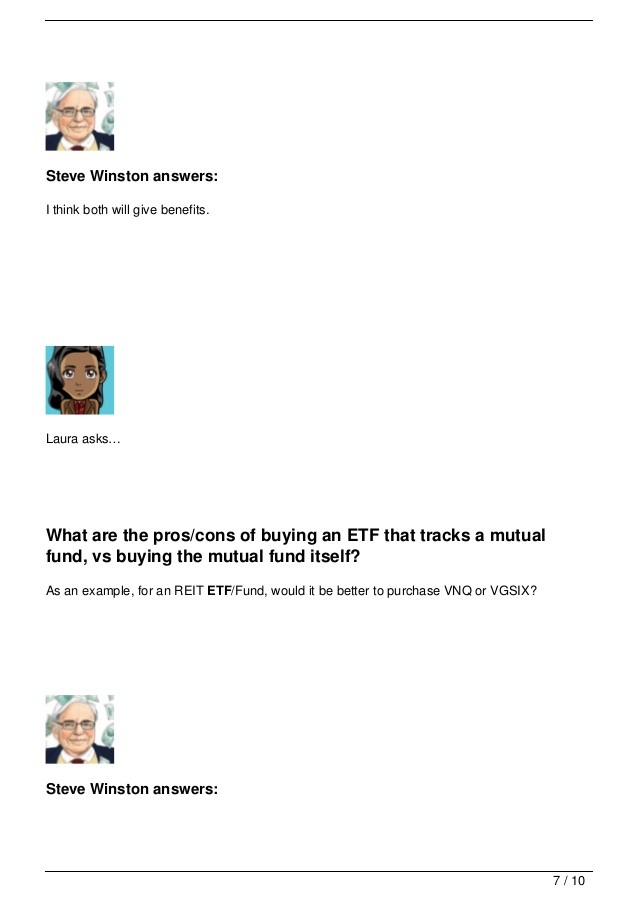Pros And Cons Of Mutual Funds And ETFs
Post on: 3 Май, 2015 No Comment

On the investment stage, mutual funds need no introduction. Offering broad diversification, low investment minimums and professional management, these baskets of stocks or bonds have become the answer to the average investor’s portfolio since they debuted in the 1920s.
Mutual funds have the bulk of individual investors’ money, with more than $15 trillion in total assets in May 2014, according to the Investment Company Institute.
But mutual funds do have their limitations. For starters, the actively managed variety passes overhead costs (research and management expenses) on to investors, which eat away at returns.
Funds also distribute capital gains at the end of each year, a taxable event for shareholders — even in years with negative returns. This is true of both actively managed and index funds, though the latter are more tax-efficient.
And, because they get priced once daily at the close of the trading day, funds aren’t flexible enough for investors who wish to take advantage of short-term dips and spikes in the market through intraday trading.
Enter the more sophisticated exchange-traded fund, or ETF, which arrived on the scene in 1993 and has fast become the investment tool of choice for Wall Street and Main Street investors alike.
ETFs, most of which track the performance of a stock or bond index, are much like index funds, with a bit more bling.
Offering broad market exposure, tax efficiency and lower operating costs, they are designed to pick up where mutual funds leave off.

One of the chief benefits of the ETF is that they tend to be significantly cheaper than conventional mutual funds, says Sonya Morris, managing director at Harbor Capital Advisors, though some index funds offer competitive expense ratios, she adds.
ETFs are baskets of securities bought and sold on an exchange, not unlike individual securities.
Among the more popular ETFs are Spiders (SPY), so named because they track the Standard and Poor’s 500 index of large-cap stocks. Diamonds (DIA), meanwhile, track the Dow Jones industrial average, while Cubes (QQQ) follow the stocks held in the Nasdaq 100 Index.
ETF prices fluctuate in real time throughout the day, making them well-suited for individual investors engaged in intraday trading.
They can also be bought on margin — using borrowed money — and sold short for those betting on a market slide.














